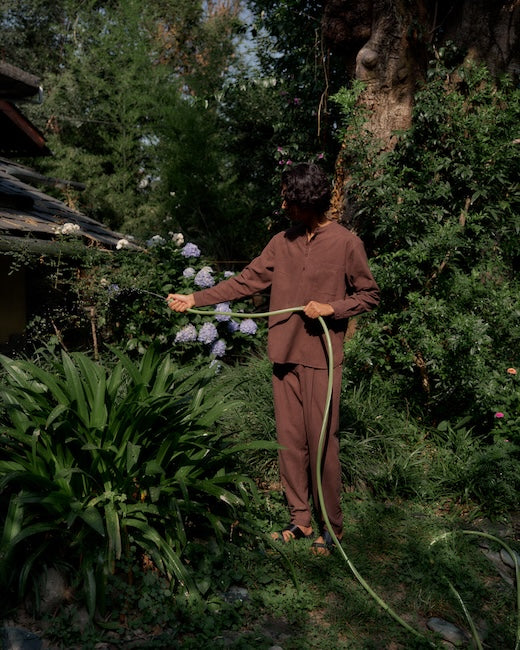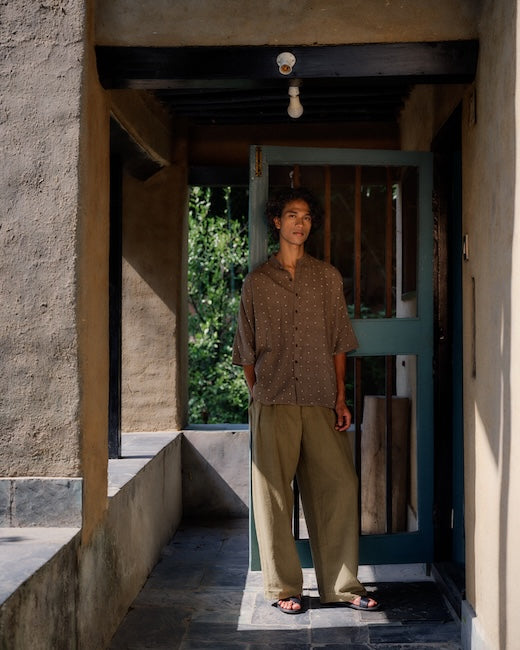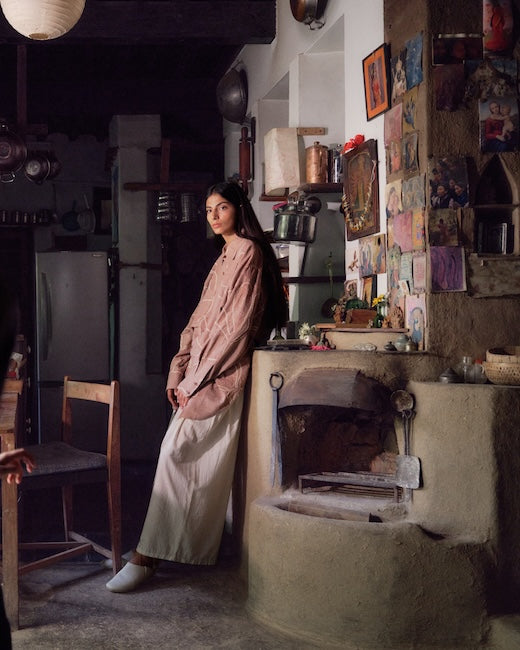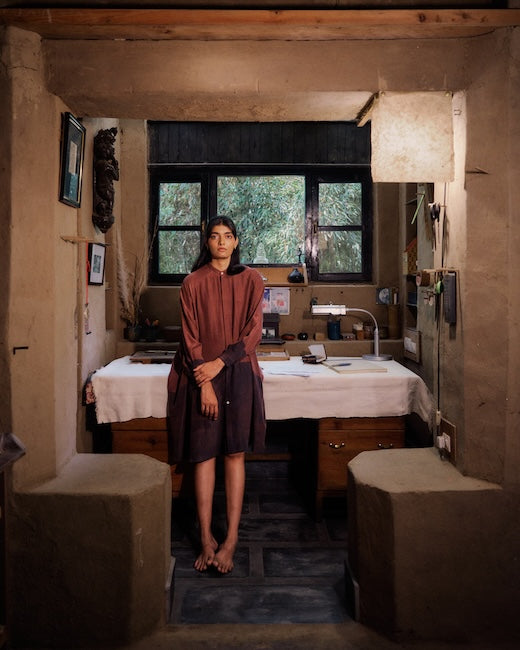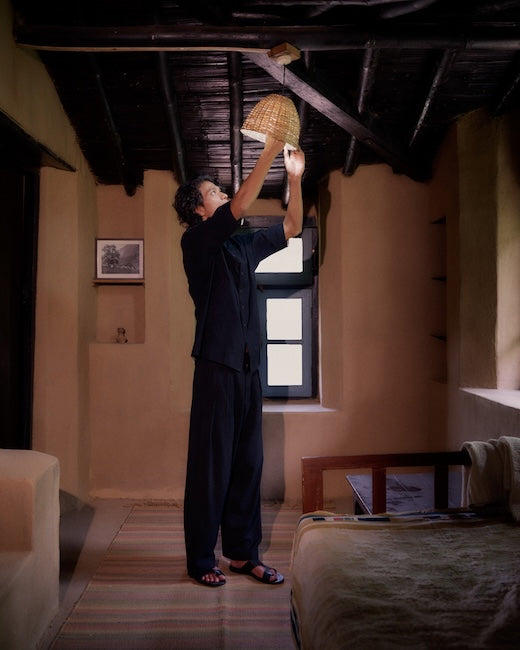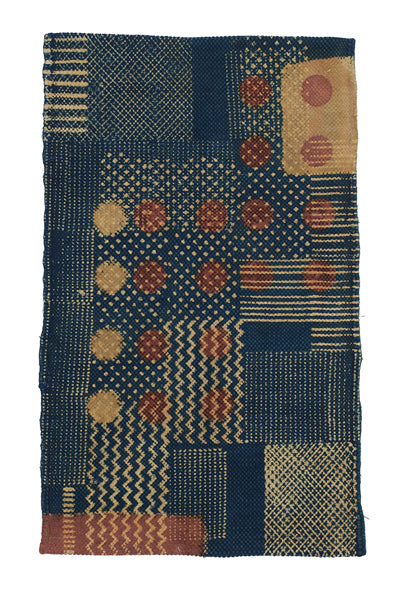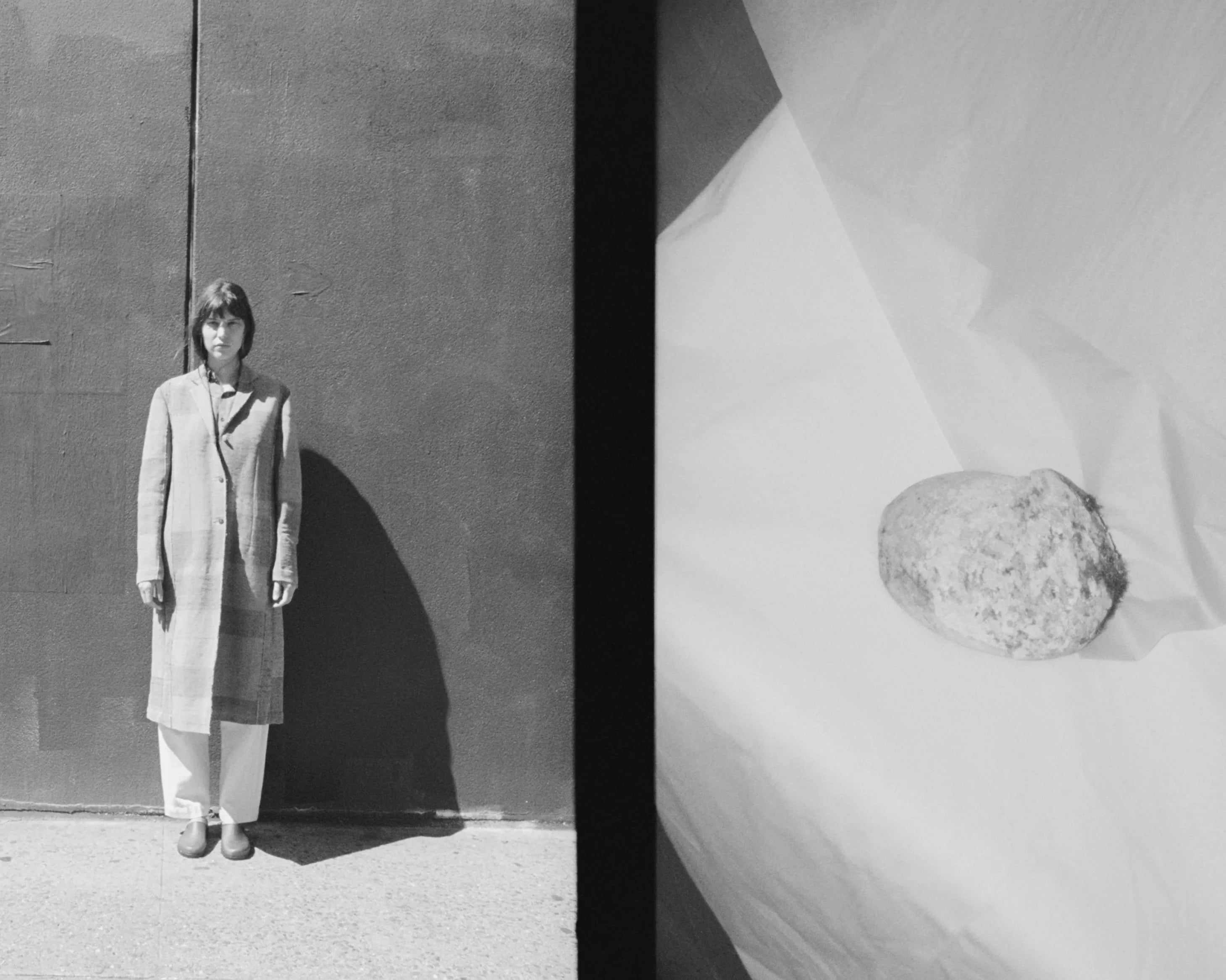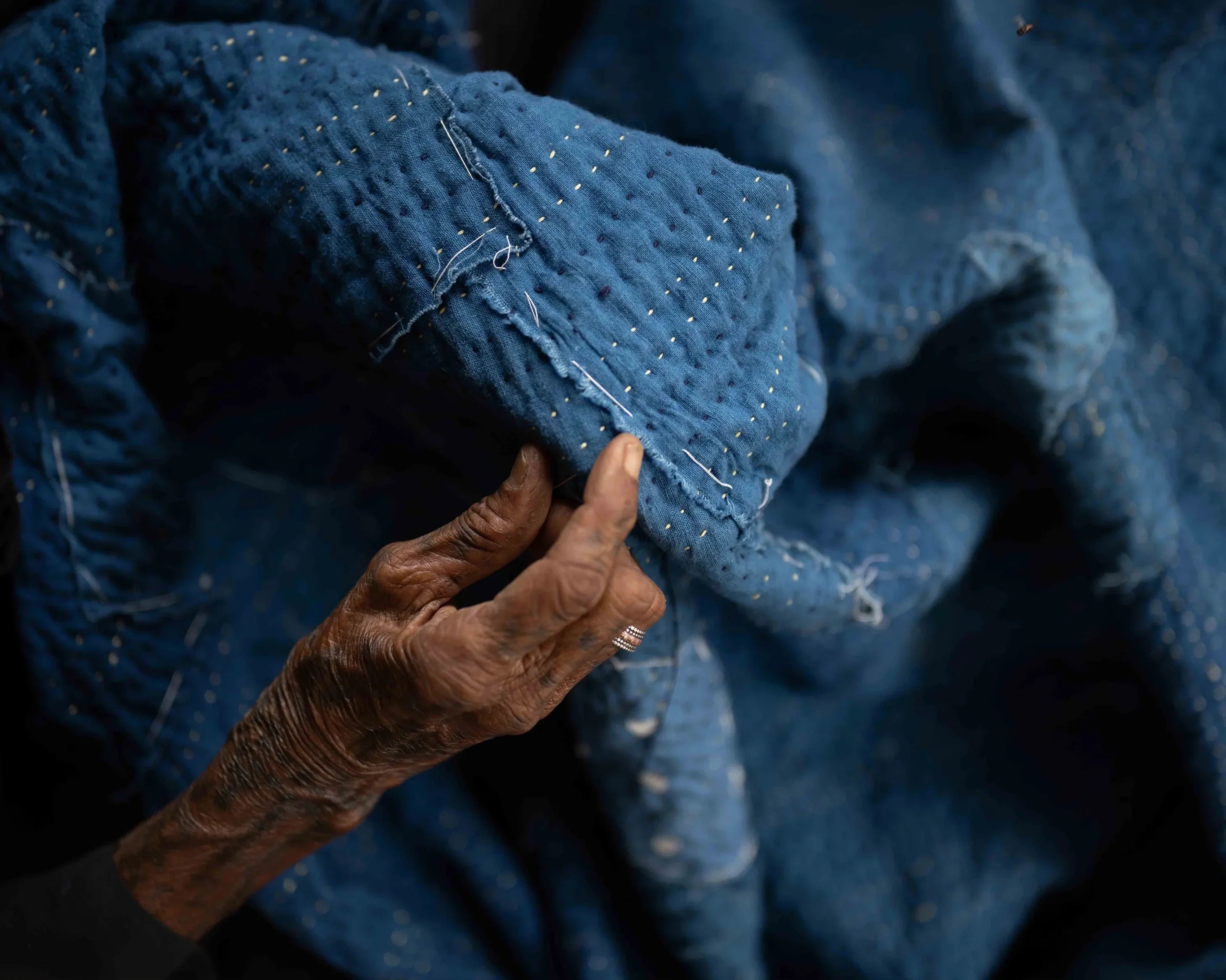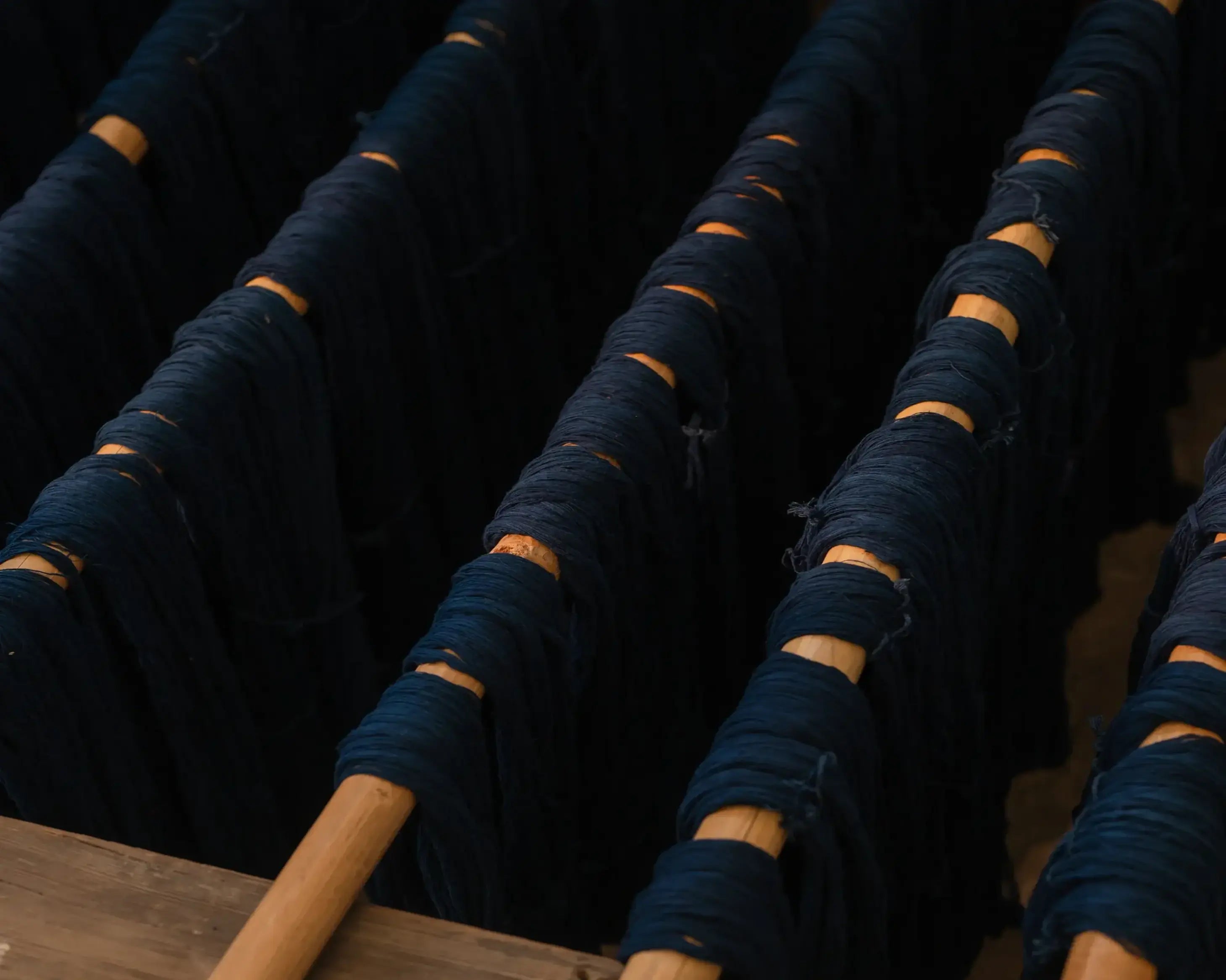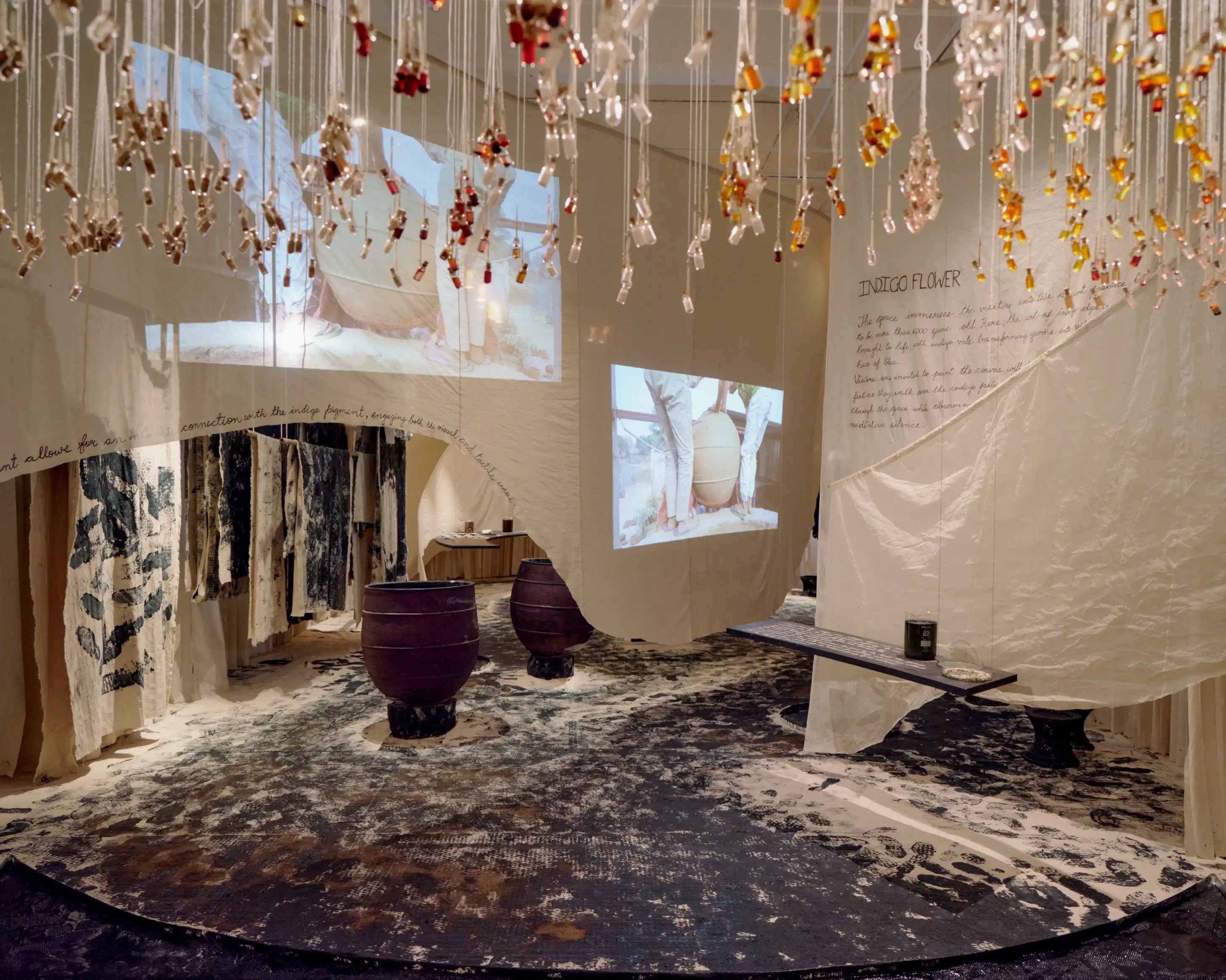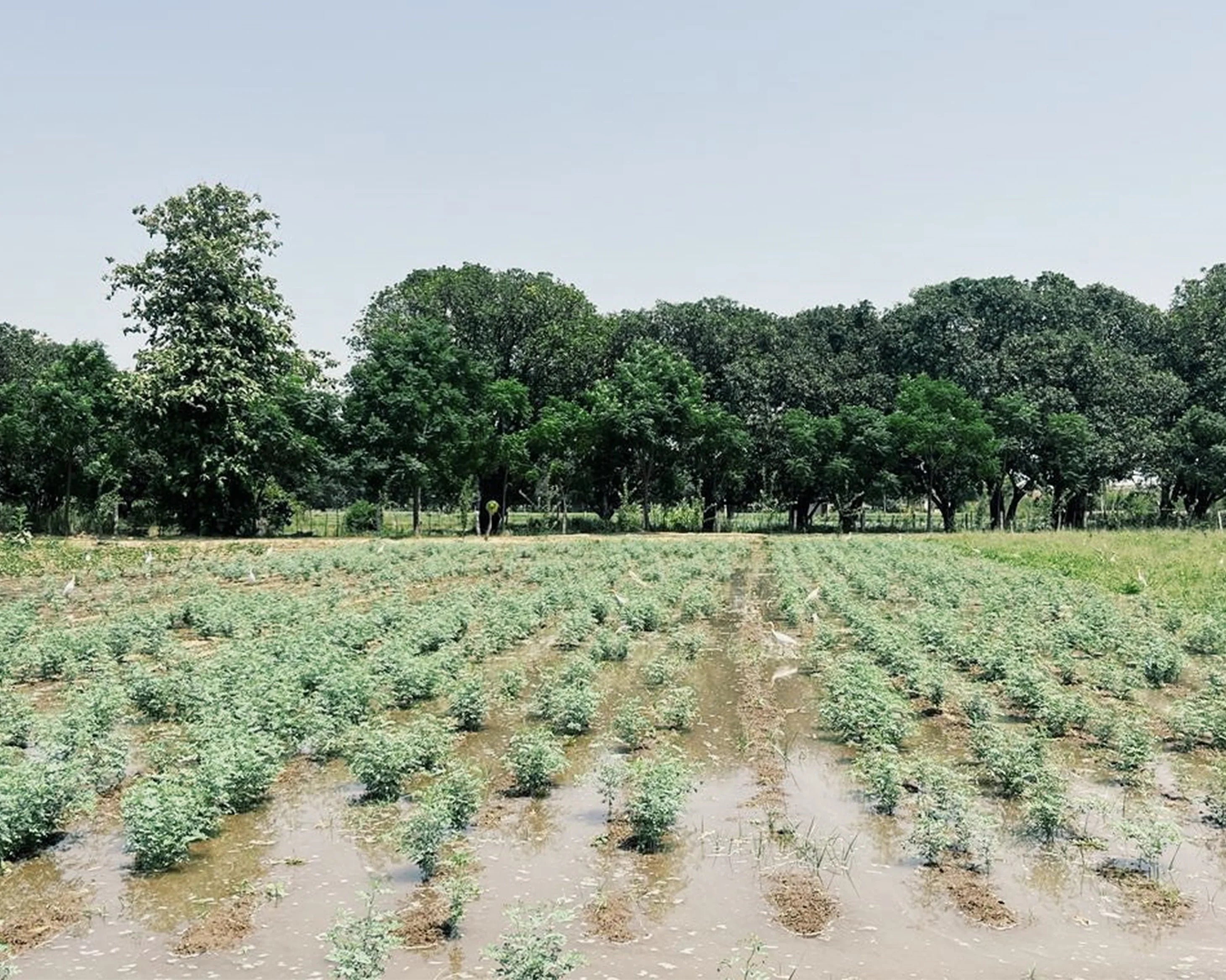
The Cultivation of Indigo in Hapur: A Journey into Natural Dyeing
 Indigofera Tinctoria
Indigofera Tinctoria
At 11.11 / eleven eleven, our venture into indigo began with a strong dedication to indeginous and traditional methods. We embarked on this journey by experimenting with Indigo cultivation on a 20,000 square-foot plot in Hapur.
Our learning of biodynamic farming originates from esteemed BhaiKaka Krishi Kendra of Dr. Sarvadaman Patel's in Gujarat. Drawing from this rich knowledge base, one of our main objectives in studying indigo, from seed to pigment, is to enhance the indigotin content. We aimed to achieve this by implementing biodynamic farming practices and ensuring the optimal conditions for growth at every stage, from seed to plant.
Hapur, just 50 kms from Delhi, was ideal for our indigo cultivation because it holds historical significance, being the same land where indigo was traditionally grown 60 years ago.
 Preparing the seed for sowing by processing it with CPP (Biodynamic preparation) and Bio npk fertilisers
Preparing the seed for sowing by processing it with CPP (Biodynamic preparation) and Bio npk fertilisers
 Hand sowing, Hapur
Hand sowing, Hapur
This holistic approach involves several key practices, starting from ploughing and enriching it with organic compost and making it weed-free. Instead of broadcasting, we hand-sowed each seed one foot apart to ensure even growth, giving each plant ample space and resources. We also used biodynamic preparations to boost soil fertility and plant health. We have not only improved the overall growth conditions for our indigo plants but also achieved a higher indigotin content in our indigo dye compared to conventional methods.
While farmers usually harvest about 4 kg of indigo pigment per acre, we successfully managed to achieve 185% more yield by employing precise hand sowing, utilising biodynamic preparations, and effectively managing water, sunlight and regular weeding.
 Indigofera Tinctoria, flower bud
Indigofera Tinctoria, flower bud
Regenerative farming was a critical aspect of our project, particularly through the implementation of crop rotation. As continuous cultivation of a single crop can deplete soil quality, this practice allows the soil to recover and maintain it's fertility. Ensuring the long-term sustainance of our farming methods and the vitality of our indigo crops. As a brand in the quest of discovering, we learn through the processes, with each small step being a stride towards mastering our craft.
 Adheep AK (Lead, Research and Development, 11.11/eleven eleven) and Ashish Tyagi (Owner of Hapur Indigo Farm)
Adheep AK (Lead, Research and Development, 11.11/eleven eleven) and Ashish Tyagi (Owner of Hapur Indigo Farm)
 Hand sowing, Hapur
Hand sowing, Hapur
 Watering the land post seeding, Hapur
Watering the land post seeding, Hapur
 Indigo Saplings, Hapur
Indigo Saplings, Hapur

